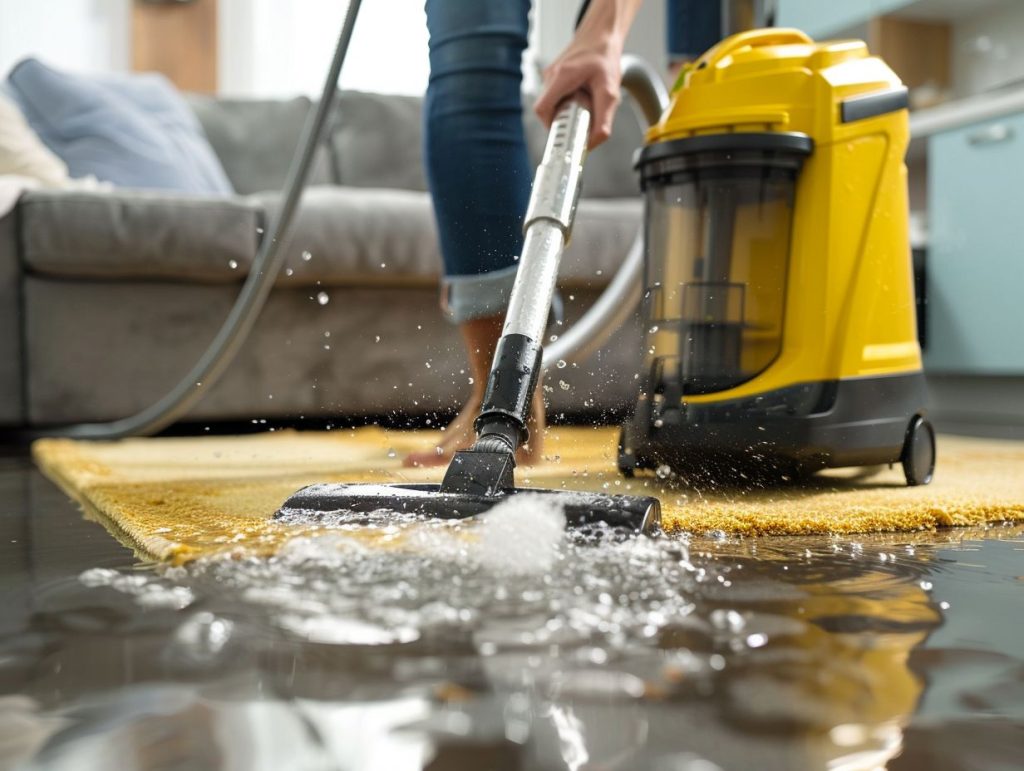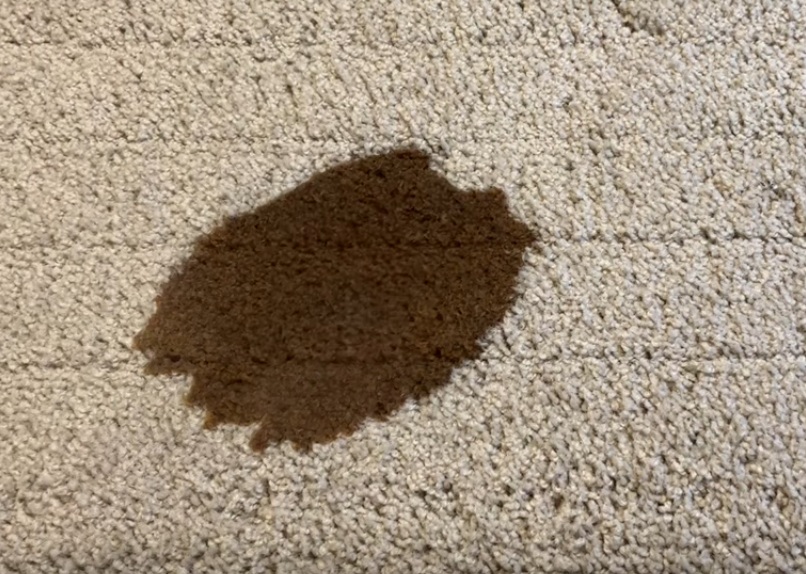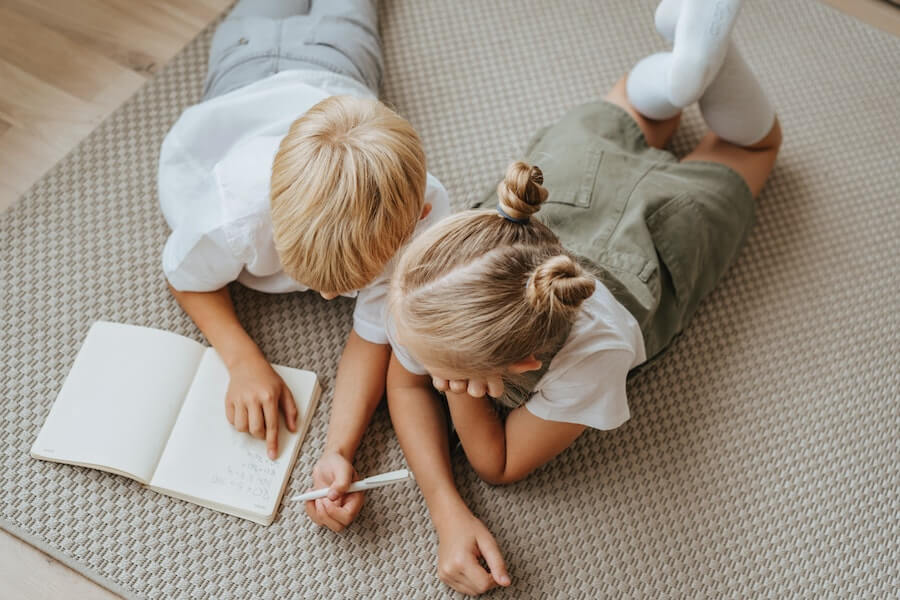Dealing with water damage to your carpets is a pain. We’ve got your back with this detailed guide on salvaging your carpets after a water disaster.
So, here’s the deal—we’ll take you through the whole shebang, starting from figuring out what caused the damage and how bad it is to check out the affected areas, getting rid of that standing water, drying out the carpet, giving it an excellent clean and disinfecting, tackling any mould and mildew issues, and finally, getting your carpet back to its prime.
Ready to roll up your sleeves and restore those carpets to their former glory?
Understanding Water Damage to Carpets
You need to grasp the ins and outs of Water Damage to Carpets to figure out how to rescue and revamp them the right way. When water wreaks havoc on carpets, it can cause all sorts of trouble – think mould creeping in and those carpet fibres taking a hit. It’s crucial to nail down those restoration techniques to stop the damage in its tracks and keep your carpets kicking for the long haul.
Causes and Severity of Damage
To grasp the causes and severity of water damage to your carpets, you must understand how crucial it is to extract moisture to prevent problems like mould growth, especially in soaked carpets. The state of your carpet underlay is critical when assessing the overall damage and restoration process.
When water seeps into your carpets, it can lead to issues like staining, odour, and structural damage. The culprits behind water damage to your carpets could be burst pipes, leaks, floods, or even just high humidity levels. The longer the water is in contact with your carpet fibres, the higher the risk of lasting damage. If the underlay beneath your carpet gets affected, things can worsen as it retains moisture and becomes a cosy spot for mould and mildew to thrive.
Assessing the Damage
When dealing with a water incident, it’s essential to assess the damage to see how it’s affecting your carpets. Whether you bring in the experts or tackle it yourself, it’s vital to grasp the ins and outs of subfloor drying and how to deal with those soggy carpets for a successful restoration.
Identifying Affected Areas and Materials
When dealing with water damage, it’s essential to have a comprehensive approach. You need to identify the affected areas and materials by efficiently extracting water, using the proper air-drying techniques, and carefully assessing the condition of the carpet padding. By having effective water restoration strategies in place, you can salvage your carpets and prevent any further damage.
Water damage to carpets can be sneaky, hiding issues beneath the surface. Inspecting the visible and hidden areas for standing water or moisture is crucial. Water extraction equipment, such as wet vacuums and extractors, is critical to removing excess water from carpets.
Proper air circulation and dehumidification are essential for thoroughly drying carpets and stopping mould growth. Also, remember to check the condition of the carpet padding—damaged padding might need to be replaced to ensure a successful restoration process.
Removing Standing Water
When dealing with water damage, remember to get rid of any standing water in your carpets. This step is essential because it helps prevent things like stains, funky smells, and the chance of mould growing on your soggy floors. Acting quickly is critical to saving your carpets in the best way possible.
Using Proper Techniques and Equipment
When dealing with standing water in your carpets, it’s crucial to utilise methods like dehumidification and specific drying procedures, as they play a key role in bringing your wet carpets back to their original state.
Dehumidification is vital to restoration because it helps remove excess moisture in the air, preventing mould growth and additional damage. Depending on how saturated the carpet is, it’s also essential to pick the appropriate technique—like using hot water extraction for deep cleaning or air movers for a quick dry. Monitor the drying progress with moisture meters to ensure you get all that moisture out. By incorporating these methods and equipment, you’ll see a significant improvement in the results of your carpet restoration efforts.

Drying the Carpet
When tackling carpet restoration, don’t forget that drying it thoroughly is crucial. This will help prevent mould from creeping in and ensure your restoration job is done correctly. Keep in mind things like how you’ll reinstall everything, the best ways to handle mould, and how long it’ll take to dry correctly. Paying attention to these factors will ensure that your restoration is a success and gets the job done efficiently.
Effective Drying Methods
Knowing how to dry your carpets effectively is crucial when you’re facing water damage. Whether you’re dealing with waterlogged rugs, soggy carpets, or the need for flooring recovery, you’ll want to make sure you handle it right. While it may be a job for the pros, some DIY tricks can also help speed up drying.
One trick you can try is using fans and dehumidifiers to circulate air and reduce moisture levels in waterlogged areas. If you throw towels or cloths on the wet spots and apply pressure, you can soak up that excess water. Another home remedy is sprinkling baking soda on damp carpets to help absorb odours and moisture.
When it comes to water-damaged flooring, don’t drag your feet. Act fast to prevent mould growth by thoroughly drying everything and disinfecting it. It’s all about getting ahead of the game when handling water damage on your precious carpets.
Cleaning and Disinfecting the Carpet
After water damage, the carpet needs to be cleaned and disinfected to keep it hygienic and prevent further damage. To handle this properly, you should implement some carpet protection steps, follow a structured restoration plan, and maintain routine carpet care to minimise the effects of a water emergency.
Using Safe and Effective Cleaning Products
When dealing with water-damaged carpets, choose safe cleaning products that get the job done. Whether your carpets are soaked and need water damage repair or you’re in a tight spot for emergency services, turning to the experts can give you the expert touch you need for a complete carpet revival.
To effectively treat water-damaged carpets, it’s crucial to use cleaners specially designed to tackle mould, mildew, and bacteria. These cleaners don’t just surface clean but also dive deep into the fibres to eliminate hidden nasties. Investing in high-quality cleaning solutions can stop further damage and guarantee a healthier environment after the restoration process.
Water damage repair services are vital in saving your carpets by drying, sanitising, and freshening them, reducing potential health risks, and keeping them in top condition.
Dealing with Mold and Mildew
Dealing with mould and mildew after water damage requires tackling it head-on to prevent further contamination and restore the affected areas to normal. Following the proper water cleanup steps, using floor restoration techniques, and properly handling waterlogged textiles and damp carpets are all key to successfully eliminating mould and mildew.
Prevention and Remediation Techniques
Prevention and remediation techniques are key when tackling mould growth and moisture issues after water damage. Consider strategies like reinstalling your carpet, adopting effective mould prevention methods, and using moisture detection tools to ensure your restoration efforts are successful.
Dealing with water-soaked carpets? You’ve got to jump into action quickly. Besides thoroughly drying out the affected area, consider upgrading your carpet padding to a material that can resist moisture when reinstalling it. Creating good ventilation and using a dehumidifier can also go a long way in keeping mould at bay. Monitor indoor humidity levels and use moisture meters to catch water damage early on. This way, you can step in promptly and reduce the chances of mould popping down the line.
Restoring the Carpet
When dealing with water-damaged carpets, you need to bring out the big guns – the right restoration gear, get rid of those water stains, call in some remediation services, and give your carpet a good once-over to make sure it’s bouncing back. Getting the restoration techniques right is critical to restoring those water-logged carpets.
Repairing and Replacing Damaged Areas
When dealing with water-damaged carpets, you must consider different ways to repair and replace the affected areas. It’s all about choosing suitable restoration options, following effective cleanup procedures, and using tips to dry the carpet. Plus, you’ve got to have strategies in place to save your carpets from irreversible damage. Acting fast is crucial in getting those carpets back in shape.
Addressing water damage in your carpets immediately can lower the chances of mould growth and serious structural issues. If the padding under the carpet is soaked, sometimes it’s just wiser to replace it instead of trying to rescue it. Strong fans and dehumidifiers can speed up drying, stopping moisture from seeping into the subfloor and causing potential long-term problems. Quick and thorough water extraction is a must to prevent water from seeping further into the carpet fibres and causing even more damage.


